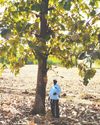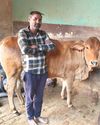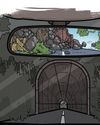HOW ROBUST IS INDIA'S TIGER CENSUS

"We are not here to inflate tiger numbers"
QAMAR QURESHI
CO-AUTHOR OF "STATUS OF TIGERS CO-PREDATORS AND PREY IN INDIA 2022"
Estimating tiger numbers is a huge exercise, with more than 40,000 people involved in data collection.
The first phase of data collection happens at the beat level. The whole of India is divided into 15 square kilometre cells. From each beat, forest guards, volunteers and daily wagers collect data about tigers, leopards, other carnivores, ungulates, large herbivores, vegetation and human disturbance. They use an application to take pictures, collect data and then upload this data in local languages. This then gets translated into English.
Secondary public data and satellite remote sensing data is used for modelling. In phase three, forest department staff and researchers collect camera trapping data including tiger pictures with the help of traps installed across India. We then use artificial intelligence (AI) to sort out those pictures that only feature tigers.
These photos then go through another AIbased programme that identifies individual tigers. Finally, a round of cross checking makes sure everything is in order. We then run models to analyse the data. We thus have data for 83 per cent of the tiger population. The rest is extrapolated.
There is always a margin of error. That is why we use human intelligence as well.
As for murmurs of discontent, people have a lot of misconceptions about the tiger estimation process. We are not here to increase or decrease tiger numbers. Our job is to be as authentic as possible.
Of course, we are human. So, there will always be mistakes.
A common mistake people do is adding tigers. For example, you have two locations which have tigers.
This story is from the August 16, 2023 edition of Down To Earth.
Start your 7-day Magzter GOLD free trial to access thousands of curated premium stories, and 9,000+ magazines and newspapers.
Already a subscriber ? Sign In
This story is from the August 16, 2023 edition of Down To Earth.
Start your 7-day Magzter GOLD free trial to access thousands of curated premium stories, and 9,000+ magazines and newspapers.
Already a subscriber? Sign In

US tariffs on drugs and the end of WTO
Trump's plan to levy duties on pharma violates WTO rules, but there is no recourse as the trade regulator is dysfunctional

TAMING THE TEAK
Tissue-cultured teak has potential to boost India's timber cultivation and trade, but requires identifying best farm practices

MAGNETIC FLIP-FLOP
Earth's magnetic field, our shield against cosmic radiations, has a history of reversals and anomalies. From setting up observatories and satellites to analysing ship logs and archeological surveys, scientists are piecing together its past to uncover clues about future shifts. Yet, many mysteries remain

DUST TO DUST
Millions of Indians work in dusty mines, factories and construction sites, facing a deadly yet underreported lung disease called silicosis. National-level data on the illness caused by dust inhalation is virtually absent.

Promising start
Sexed semen technology can revolutionise India's dairy sector. But its impact on biodiversity must not be ignored

TIRELESS CHRONICLERS
Every decade since 1974, scholars, activists, students and journalists have embarked on a unique 45-day journey on foot through the hinterlands of western Himalayas to revive and restore the lost ties RAJU SAJWAN

'Integrate health, physiology to assess heat impacts'
When we think of extreme heat, the discussion often focusses only on the mortality it causes. However, it affects individuals differently. JOY MERWIN MONTEIRO, assistant professor at the Department of Earth and Climate Science at the Indian Institute of Science Education and Research, Pune, is studying how a combination of environmental and individual factors determine the risk of heat-related health impacts. In an interview with HIMANSHU NITNAWARE, Monteiro discusses the concept of heat strain—the physiological burden extreme heat places on the body—and why understanding it is crucial to safeguard the population. Excerpts:

In search of new homes
As Asiatic lions outgrow their last refuge in Gujarat’s Gir forests, they are crossing the state borders and even venturing into unlikely coastal areas to establish new territories

Invisibilised localities
AN ETHNOGRAPHIC STUDY ON THE NETWORKS, CULTURAL TRADITIONS AND OBSTACLES FACED BY RESIDENTS OF JHUGGIS AND TRANSIT CAMPS WHILE DEALING WITH EVICTION POLITICS AND INEQUALITIES IN DELHI

TUNNEL VISION
Bengaluru's civic body must ascertain suitability of the city's geology before moving ahead with its tunnel road project for seamless travel
